Our state-of-the art amenities facilitate our world-class research
The Institute for Glycomics' Glycobioanalytical Facility comprises of two main areas: Glyan Array Facility and a Bioanalytical Suite. These areas work side-by-side for the high-throughput screening and determination of glycan-binding profiles of proteins, whole eukaryotic and prokaryotic cells, parasite and viruses, through to characterisation of these binding interactions.
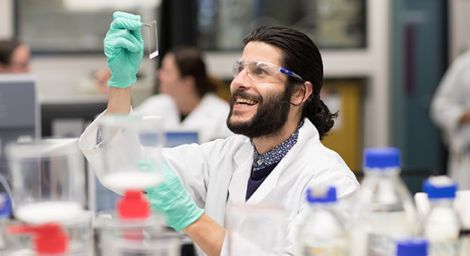
Glycomics Array Facility
The Glycomics' Array Facility was established in 2006 and comprises a microarray manufacturing suite. The Array Facility has experience, expertise and instruments for the manufacture of contact printed microarray slides. Routinely printed slides include glycan, lectin (carbohydrate-binding protein), as well as custom arrays including amino acid, DNA, oligonucleotide, peptide and antibody arrays.
Find out more about the Bioanalytical suite

Bioanalytical Suite
The Bioanalytical Suite has the instrumentation to enable researchers a one-stop shop for identification of a binding profile and the further characterisation of these interactions through the implementation of surface plasmon resonance or isothermal titration calorimetry, and whole-cell-based assays through flow cytometry.
Find out more about the Bioanalytical suite
Glycomics Array Facility
Our Glycomics Array Facility is the Institute’s centrepiece facility and incorporates established glycan and lectin array technologies, and a developing ‘glycan-specific’ monoclonal antibody array technology.
The facility is available to industry and academia.
Services
The Glycomics Array Facility offers
- carbohydrate and lectin screening of whole cells and organisms, bacteria, viruses, spores, proteins and other biological particles
- an extensive and comprehensive library of structurally defined and biologically relevant glycans.
- expertise in screening for glycan binding by proteins, whole cell and whole organisms.
- a dedicated “cleanroom-style” slide printing suite and a separate slide scanning and analysis suite.
- multiple slide printers and three dedicated slide scanners with varying capabilities providing flexibility and robustness for slide analysis.
- an integrated barcode system to link critical data to each slide.
- quality-controlled experiments.
- assurance of data confidentiality and security of material.
- in-house manufacturing of slides, with customisation available.
Our laboratory is equipped with a wide variety of instruments, which enables access to a state-of-the-art printing facility.
Our services include:
- preparation of samples production of
- custom arrays
- data processing
- scanning and analysis of slides.
Our customers are supplied comprehensive protocols and procedures, software for slide processing (if required), statistical analysis assistance and troubleshooting assistance.
Equipment
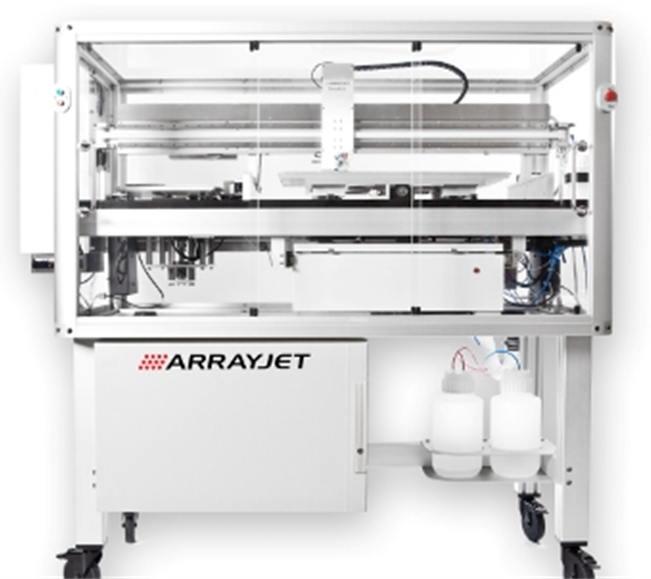
Features include:
- on-the-fly non-contact printing, using the 12-capillary JetSpyder for minimal sample usage and dispensed by a 126-nozzle piezoelectric printhead.
- ability to print 100 slides from six source plates. temperature and humidity control.
- inbuilt camera QC system with user-defined threshold parameters. Every printed spot is examined and spot morphology, satellites and presence is noted and reported on. Image of every slide is generated.
For more information on this piece of equipment, visit arrayjet.com
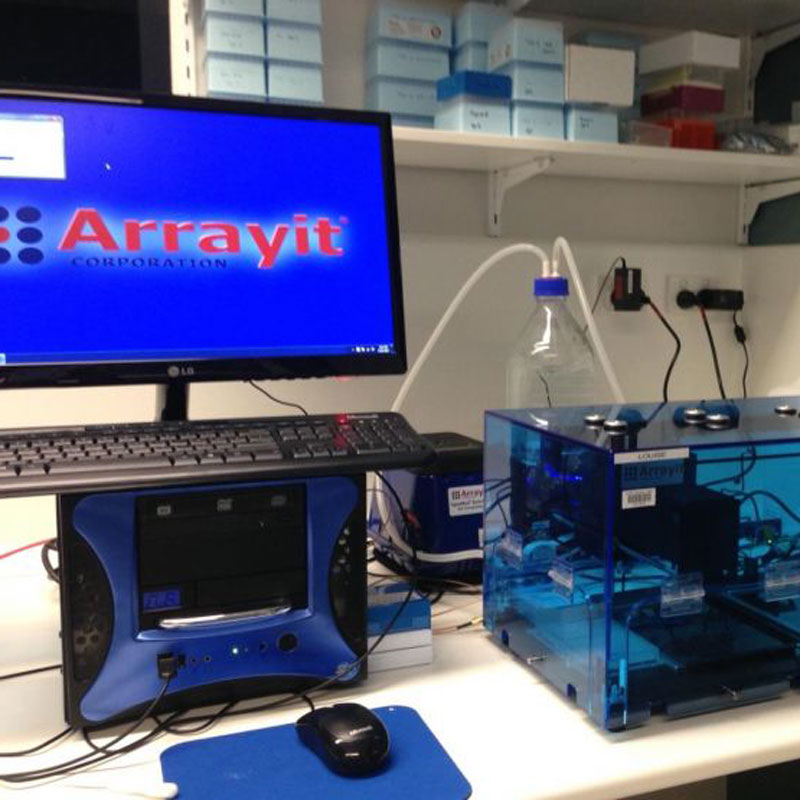
SpotBot Extreme is a contact printer for the generation of array slides. The SBXPro has a single 384-well source microplate and two printing zones holding 28 glass substrates. The system allows for temperature controlled printing deck, down to 4oC and humidity control from 10-80% relative humidity. The print head holds 16 microarray printing pins in a 4 x 4 pattern with 4.5 mm spacing using professional series pins, and cleaned during printing using the megasonic wash station for high-efficiency pin cleaning.
The SBXPro can be used for the following array formats:
- carbohydrate (glycan) arrays
- protein (lectin) arrays
- oligonucleotide
- cDNA
- antibody
- peptide
- reverse phase microarrays
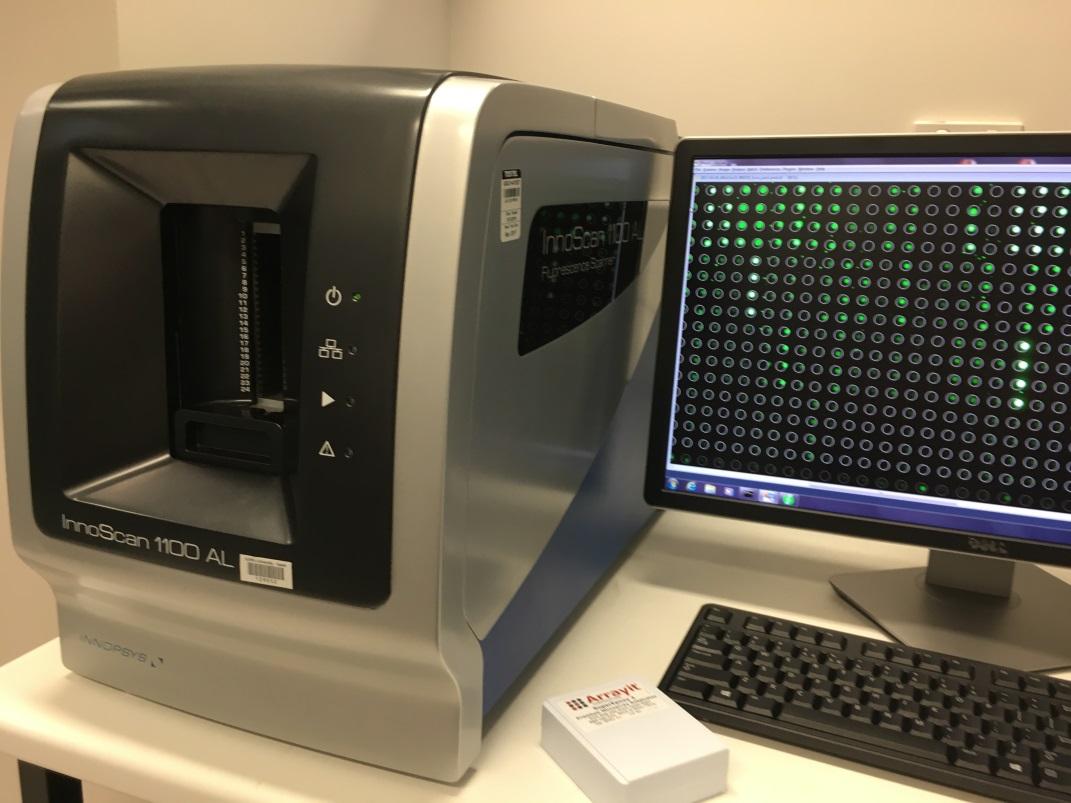
Numerous microarray scanners are available for scanning and data acquisition of microarray slides. The scanners available include the following:
- Innopsys InnoScan 1100AL with resolution between 0.5-40µm, three laser (red, green and blue) with custom filter set (605/611nm). Three wavelength simultaneous or sequential scans. Integrated barcode reader and 24-slide autoloader. Produces 16-bit or 20-bit images (XDR) for analysis via Mapix software.
- Perkin Elmer ScanArray 5000XL with resolution between 5-40µm, lasers: 647nm (red), 595nm (yellow) and 543nm (green).
- Perkin Elmer ProScanArray HT with resolution between 5-40µm, lasers 647nm (red) and 543nm (green) fluorophores.
For further information, visit innopsys.com
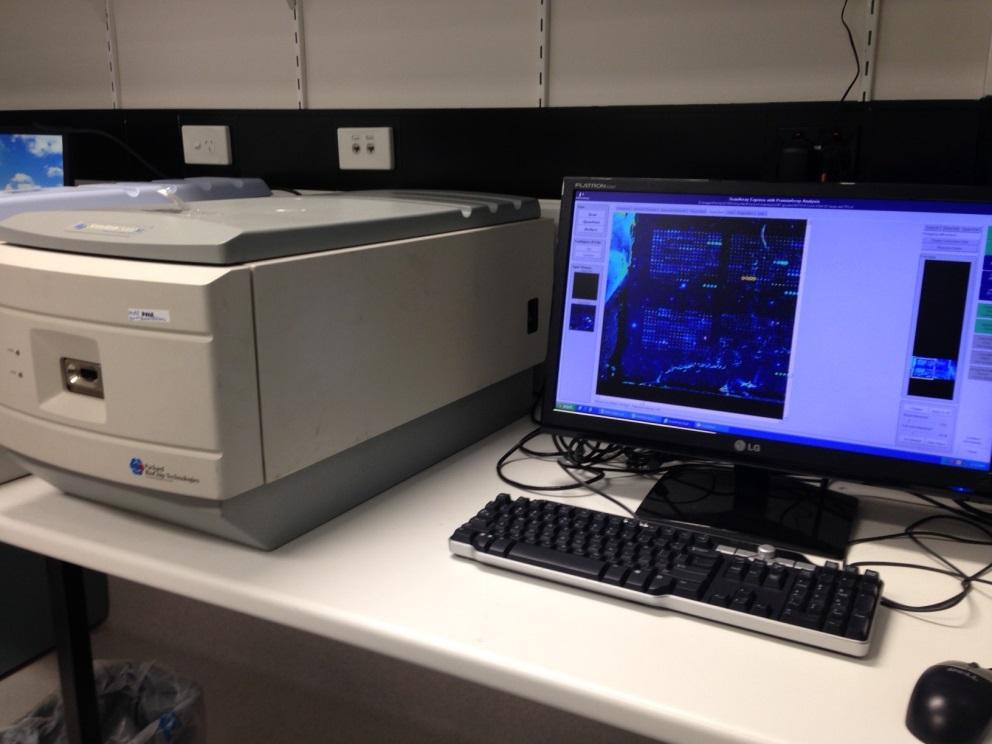
The scanned slide produces a high-resolution 16-bit TIF image. This image can be processed by multiple imaging software. We routinely use ScanArray Express (Perkin Elmer) or Mapix (Innopsys) for image quantitation and analysis. These applications are able to determine background intensity and signal intensity generation. This software produces tab-delimited text files, showing each spot intensity, background, signal to noise ratio and location. We can assist in data image file analysis and statistical analysis.
Bioanalytical suite
Our bioanalytical suite focuses on the characterisation of biomolecular interactions.
There are two main options available: Isothermal Titration Calorimetry (ITC) and Surface Plasmon Resonance (SPR). These methods are industry standard for the characterisation of binding strength (affinity), binding on/off rates (kinetics) and specificity.
Within the Bioanalytical Facility, we have a number of modern SPR instruments, including GE Biacore T200, GE Biacore S200 and a ForteBio Pioneer FE and a TA Instruments NanoITC available for label-free characterisation of biomolecular interactions. Our expert team strive to provide fast and comprehensive service for the screening and characterisation of biomolecular interactions.
Here at the Institute for Glycomics, although focus has been primarily on protein-carbohydrate interactions, we also have expertise in fragment based drug discovery, drug library screening, protein-protein interactions and well as SPR competition assays.
Services
Isothermal Titration Calorimetry (ITC)
ITC is an in-solution based technique where the analyte is titrated into the protein (receptor) and the heat of binding is measured. This technique allows for simultaneous determination of stoichiometry, information on equilibrium, enthalpy and entropy of the reaction and allows for full kinetic determination of the binding interaction. NanoITC allows for small volumes, as the cell volume is 170µL and the syringe injects 50µL.
ITC provides information on thermodynamic parameters of binding interactions, and does not require capturing ligand on a surface as in SPR.
Surface Plasmon Resonance (SPR)
SPR enables real-time detection of molecule-molecule interactions such as affinity and kinetics. The basis behind SPR is optics based measuring technique which determines association / dissociation rates by a mass change on the surface of a biosensor. Proteins are immobilised or captured on the surface and analytes (test compounds) are flowed over the surface. This allows for the detection of highly dynamic binding events. There are a range of sensor surfaces for the various applications, including the capture of tagged proteins (i.e. His-Tag), small to large proteins, lipids/cell membranes and whole cells (eukaryotic and prokaryotic).
Three instruments are available for SPR based techniques, GE Healthcare BIAcore T200 and BIAcore S200 systems, and a ForteBio Pioneer FEfor high throughput fragment screening.
Equipment

Biacore systems enable the characterisation of molecules in terms of binding strength (affinity), on/off rates of binding (kinetics) and specificity of the interaction. The S200 system allows for competition via the new ABA inject function.
Biacore can be used to screen the following interactions:
- protein-protein
- protein-carbohydrate (glycan)
- protein-small molecule/inhibitors
- whole cell-protein/glycan/inhibitors
- lipid and membrane capture.

ITC is the gold standard for measuring biomolecular interactions. In an ITC-run stoichiometry (n), enthalpy (ΔH), binding constants (K) and entropy (ΔS) are all determined simultaneously. ITC enables this, as when substances bind, heat is generated or absorbed. Measuring this heat provides a complete thermodynamic profile of the molecular interaction in a single experiment.
NanoITC performs all the experiments in-solution and can be used for the following applications:
- protein-small molecule
- protein-protein
- enzyme-inhibitor
- protein-DNA
- protein-lipid.
Facility Manager
Dr Lauren Hartley-Tassell
Our facility manager has a PhD in microbial glycobiology and has been actively involved in carbohydrate based research at the Institute for Glycomics since 2010.
She has extensive experience in
- array based technology, from design and printing of array slides, all the way through to data analysis and interpretation.
- research from array based screening through to determining interaction kinetics,
- fragment based drug discovery,
- inhibition/competition of low molecular weight ligands via Surface Plasmon Resonance (SPR) or Isothermal Titration Calorimetry (ITC).
Internal facility users
Internal, Griffith University users can book our facilities through the iLab application.
External facility users
Anyone external to Griffith University who would like to collaborate with us and access our state-of-the-art facilities can get in touch via e-mail.